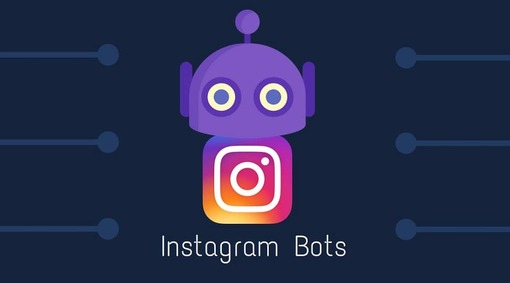B2B PR VS B2C PR What's The Difference?In the corporate world B2B and B2C are two unavoidable terms. But what do they mean and how do they affect the PR professional? The terms are basically self explanatory when the expanded version is revealed – Business to Business (B2B) and Business to Consumer (B2C). The difference really is the target market. B2B entities sell products and services to other businesses while B2C entities sell their products and services to the general public. Both types of organizations have PR needs but since their target markets are different, they need to approach PR differently. Different Target Market Undoubtedly one of the biggest differences between B2B and B2C companies is their target market. The typical B2B prospective customer persona is a purchasing executive or manager for an entity while the B2C entity’s prospective consumer may fit one of an infinite number of demography descriptions with sports enthusiasts, food lovers, retirees and young adults being just a few. And of course the target market defines much of what the business does, including its PR strategy. Facts Vs Frills The B2C target market is more likely to be impacted by a PR that carries a combination of facts and frills but a B2B target market is typically interested in facts, not frills. This is why B2C PR typically features influencers and entertaining graphic, audio and visual content. These ‘frills’ are designed to capture the attention of the consumers. B2B customers, on the other hand, are typically responsible for making purchasing decisions for their organizations. They tend to lean towards PR strategies that are focused on facts rather than frills. PR strategies that focus on the advantages companies reap when using a brand’s products and services are more successful for B2B companies. Additionally, B2B buyers tend to be more meticulous and discriminating in selecting a brand as their decisions impact the overall performance of the business and by extension their jobs. B2C customers sometimes spend a lot of time choosing a brand, but they are more inclined to spontaneous purchase than B2B customers. B2B PR should take this into consideration and ensure that their PR content helps customers to make informed decisions. Because B2B sellers typically interface with selected representatives of their corporate clients, relationships are crucial to their branding success. It is therefore important to provide existing and prospective customers with frequent updates about new and improved products and services and also to simply engage the target audience at regular intervals. Platform Another difference between the two PR approaches is the medium used to reach the target market. PR professionals have several communication tools at their disposal ranging from social media and networking platforms to the traditional email and digital newsletter. B2B prospective customers are corporate representatives. They are more likely to frequent networking platforms like LinkedIn, which are designed for that demography. Other platforms that work well for B2B PR include Medium, Quora and YouTube. B2B customers are also more likely to respond to PR content delivered through emails. But this does not however mean that B2B PR should totally ignore social media platforms B2C target markets on the other hand are better reached through less formal channels such as social media platforms. Ultimately the difference between B2 and B2C PR lies in the nature of the target market that each type of business aims to engage. On one hand B2B PR focuses on fact-driven content that highlights how the company’s offerings can help its corporate clients and on the other had B2C PR focuses on the prestige, comfort and enjoyment that the company’s offerings can deliver to the general public. And of course the tools used reflect the type of PR being applied. Read Now  In the corporate world B2B and B2C are two unavoidable terms. But what do they mean and how do they affect the PR professional? The terms are basically self explanatory when the expanded version is revealed – Business to Business (B2B) and Business to Consumer (B2C). The difference really is the target market. B2B entities sell products and services to other businesses while B2C entities sell their products and services to the general public. Both types of organizations have PR needs but since their target markets are different, they need to approach PR differently. Different Target Market Undoubtedly one of the biggest differences between B2B and B2C companies is their target market. The typical B2B prospective customer persona is a purchasing executive or manager for an entity while the B2C entity’s prospective consumer may fit one of an infinite number of demography descriptions with sports enthusiasts, food lovers, retirees and young adults being just a few. And of course the target market defines much of what the business does, including its PR strategy. Facts Vs Frills The B2C target market is more likely to be impacted by a PR that carries a combination of facts and frills but a B2B target market is typically interested in facts, not frills. This is why B2C PR typically features influencers and entertaining graphic, audio and visual content. These ‘frills’ are designed to capture the attention of the consumers. B2B customers, on the other hand, are typically responsible for making purchasing decisions for their organizations. They tend to lean towards PR strategies that are focused on facts rather than frills. PR strategies that focus on the advantages companies reap when using a brand’s products and services are more successful for B2B companies. Additionally, B2B buyers tend to be more meticulous and discriminating in selecting a brand as their decisions impact the overall performance of the business and by extension their jobs. B2C customers sometimes spend a lot of time choosing a brand, but they are more inclined to spontaneous purchase than B2B customers. B2B PR should take this into consideration and ensure that their PR content helps customers to make informed decisions. Because B2B sellers typically interface with selected representatives of their corporate clients, relationships are crucial to their branding success. It is therefore important to provide existing and prospective customers with frequent updates about new and improved products and services and also to simply engage the target audience at regular intervals. Platform Another difference between the two PR approaches is the medium used to reach the target market. PR professionals have several communication tools at their disposal ranging from social media and networking platforms to the traditional email and digital newsletter. B2B prospective customers are corporate representatives. They are more likely to frequent networking platforms like LinkedIn, which are designed for that demography. Other platforms that work well for B2B PR include Medium, Quora and YouTube. B2B customers are also more likely to respond to PR content delivered through emails. But this does not however mean that B2B PR should totally ignore social media platforms B2C target markets on the other hand are better reached through less formal channels such as social media platforms. Ultimately the difference between B2 and B2C PR lies in the nature of the target market that each type of business aims to engage. On one hand B2B PR focuses on fact-driven content that highlights how the company’s offerings can help its corporate clients and on the other had B2C PR focuses on the prestige, comfort and enjoyment that the company’s offerings can deliver to the general public. And of course the tools used reflect the type of PR being applied. Comments are closed.
|
- Home
- Team
- Tik Tok
- Instagram & FB Verification
- Verified Instagram Accounts
- Instagram Usernames & Brokerage
- Verified Instagram Username Change
- Celebrity Instagram Growth Giveaways
- Verified Instagram Accounts With Desired Username
- Recover Disabled or Hacked Accounts
- Linkedin Username Claim Service
- Acquire Premium Accounts
- YouTube Verification
- Instagram Ban Service
- Twitter Verification
- Become a Forbes Contributor
- Write For Entrepreneur.com
- Verified Twitter Username Change
- Verified Facebook Page With Desired Username
- Instagram Growth
- Reputation Management
- Snapchat Verification
- Famous Birthdays
- Wikipedia Page Creation
- Google Knowledge Panel
- Spotify promotion
- Google News Approval Service
- PR for Influencers & Content Creators
- PR for Brands & Startups
- PR for Crypto, Blockchain & DeFi Companies
- PR for Musicians & Artists
- Partner Program
- Careers
- Blog Articles
- Clients
- Contact
Contact
Only Official Email Address [email protected]Always email directly via our official email to make sure you're liaising with us!
|
|




